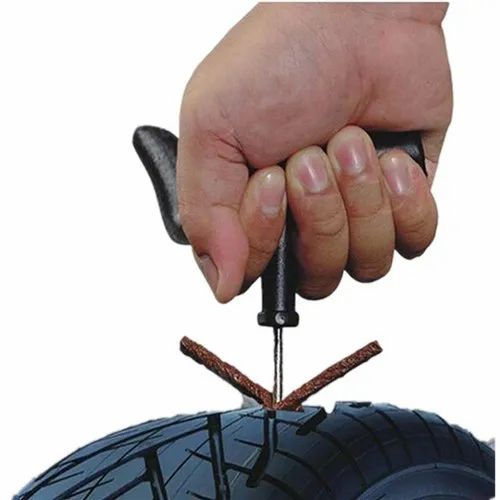By Jim Langley
Now that the nice riding weather has returned to the northern hemisphere and spring events have sprung, I want to cover a good question for this time of year from a Minnesota roadie, Dale, who asked awhile ago:
“They say that winter may end here in a few months. I switched to tubeless tires on my Trek Domane last season. Do I need to renew the sealant in them before I start riding again? If so, how do I accomplish that?”
Tubeless tires? Sealant? Huh?To answer, let me backpedal a bit and explain to those who do not know that many road bicycles and wheelsets you might have or can upgrade to, have the option of running what’s known as tubeless tires. As the name suggests, these tires do not have tubes inside.
Why would you care if your tires had tubes inside? Two reasons: the most common flat tire is a pinch flat where you run over a rut, hole or object in the road and pinch your tube and flat. Pinch flats are sometimes called snakebite flats because they show up as two small slices next to each other on the tube – like a snakebite.
Since there’s no tube inside a tubeless tire, pinch flats become a non-issue. The other advantage of tubeless tires is a softer, more supple ride because you can run lower tire pressure since there’s no risk of pinch flatting.
On most bicycles and wheels, in order to run tubeless tires, you need tubeless-compatible rims and tires and a few ounces of sealant. Sealant is a liquid with some type of fibers inside (every manufacturer has their own secret sauce) that when you puncture, almost immediately find the hole and seals it from the inside of the tire so you can keep right on riding.
Better safe than sorry with sealantSo, Dale is asking if the sealant that was installed inside his tubeless tires needs to be renewed or if he can just keep riding with the same stuff in his tires. And, the answer is, Yes, it needs to be renewed.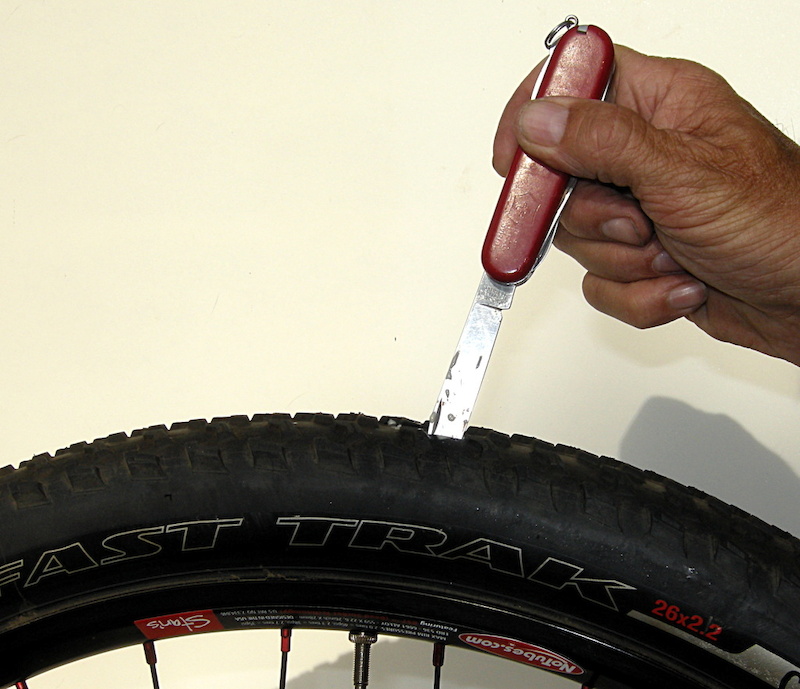 What that really means is that you have to add more sealant inside the tires.
What that really means is that you have to add more sealant inside the tires.
The reason he needs to do this is because sealant dries out, and usually a lot sooner than an entire season. In fact, depending on the type of sealant you use and the conditions where you ride, you might need to add sealant as often as once a month.
The key thing to know is that if you’re not sure how your sealant is holding up, you want to check rather than assume that there’s plenty inside. Because if you assume, that might be the day your sealant fails, and if it’s an important goal ride, the resulting flat tire could be a very bad thing.
Checking sealantThis is a relatively easy job if you can suspend your bicycle or remove and suspend each wheel vertically. With the wheel in this position, any sealant inside will tend to stay inside and not leak out. But, if you care about your flooring, it’s still a good idea to put down newspaper beneath the bike/wheel to catch any that escapes.
Tubeless tires usually lock tightly when inflated, so it can take a little effort to free them from the rim, which you have to do to check the sealant and add more. To do it, let all the air out of the tire and then go around it squeezing the sides of the tire together to push the tire sides and beads (the part tucked down inside the rim) toward the middle of the rim.
You should feel the tire pop and break free. Once you’ve gotten it loose like this, work on it at 12 o’clock on the wheel with tire levers to carefully remove about six inches of only one side of the tire from the rim.
By working on the top of the wheel, any sealant in the tire stays in the bottom of the wheel and won’t spill out. Then, just slowly rotate the section of tire you removed down to the 6 o’clock position and you’ll be able to look inside the tire to gauge how much sealant is still inside.
If the sealant has been in there for months, you’ll probably find some alien-looking matter inside like a science experiment gone wrong – blobs or strings. And you’ll probably only find a little liquid. These things tell you that it’s time to add a fresh dose of sealant to your tires so that you can enjoy flat-free rides again. Before you do this, you can either clean out the debris and old sealant inside, or leave it if you don’t mind the little bit of extra weight and mess – and possible noises.
And you’ll probably only find a little liquid. These things tell you that it’s time to add a fresh dose of sealant to your tires so that you can enjoy flat-free rides again. Before you do this, you can either clean out the debris and old sealant inside, or leave it if you don’t mind the little bit of extra weight and mess – and possible noises.
Read the instructions on your choice of sealant. It will tell you how much to install based on your tire size (usually 2 to 4 ounces/59 to 118 ml). Pour the correct amount of sealant into the tire. Then, carefully rotate the open part of the tire back to 12 o’clock again. The sealant will now run down inside the tire so it can’t leak out. And you can pop the tire back on at the top.
Now comes the tricky part: installing and seating the tire so that it holds air. Because there’s no tube inside, if the tubeless tire doesn’t seal/seat correctly it will just keep going flat.
As I mentioned, tubeless tires lock on during inflation and it’s this locking that seals them.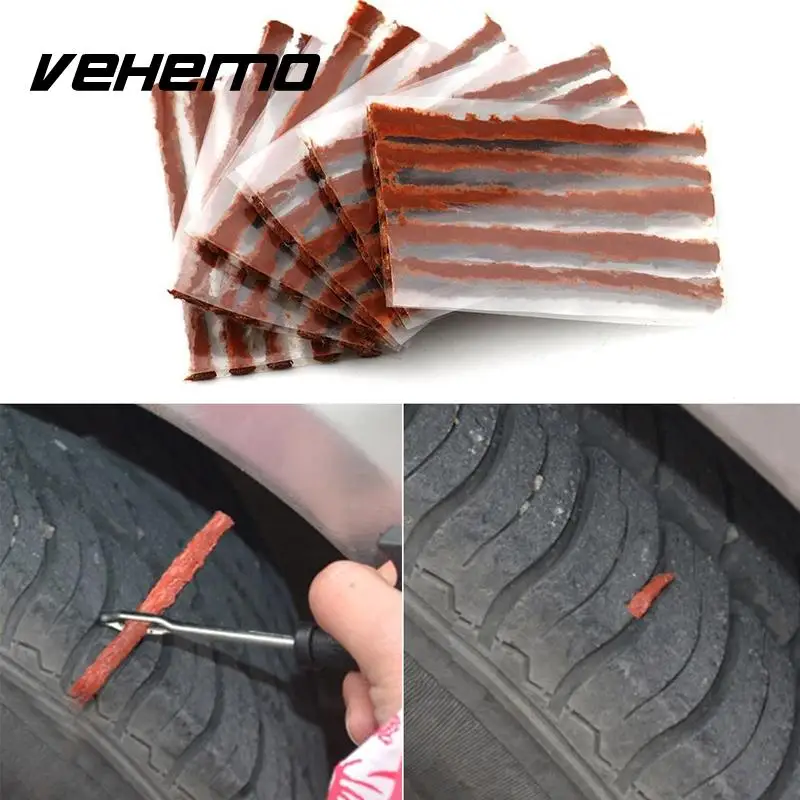 With luck, because the tire has already been seated on the rim for awhile, you will be able to inflate it and seat it with your home floor pump (these are more powerful than pumps made for taking with you on rides).
With luck, because the tire has already been seated on the rim for awhile, you will be able to inflate it and seat it with your home floor pump (these are more powerful than pumps made for taking with you on rides).
A good trick is to go around the tire with a brush wet with soapy warm water to lubricate the beads of the tire to help them pop into place and seal as you inflate the tire.
Tip: If you can’t get the tubeless tire to seal with your floor pump, find a volunteer to pump while you put both hands on the tire and squeeze the tire down onto the rim as they keep filling it with air. Keep trying and move your hands to different positions where you hear air coming out, and in most cases, working together, you can seal the tire with your hands long enough that the tire stops leaking and fills up and seats.
Most tubeless tires make several reassuring pops or snaps when they seat fully, so listen for these. You always want to spin the wheel and look carefully at both sides of the tire, too.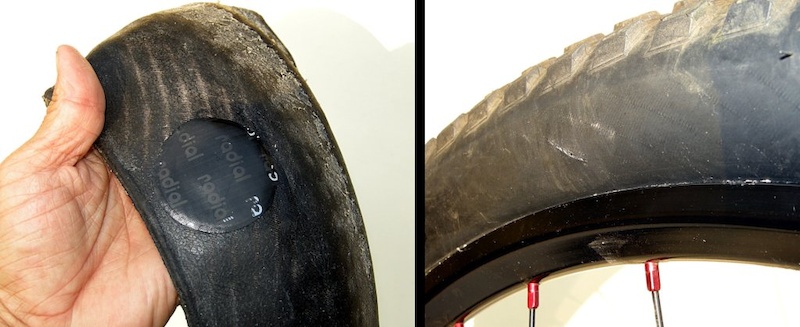 If you see any hops or wobbles, the tire isn’t fully seated. It needs to be seated fully or the air will leak out.
If you see any hops or wobbles, the tire isn’t fully seated. It needs to be seated fully or the air will leak out.
Another way to add sealant is to do it through the valve stem. Most tubeless systems have valve stems with removable cores. Simple turn counterclockwise with a core remover tool, or gently with pliers, to remove.
Once the core is out of the way, you can use your sealant injector of choice (a syringe-like device sold by sealant makers) to pump more into the tire.
Tip: If you have been using tubeless tires for some time and paying attention to how frequently you need to add more sealant, you wouldn’t need to remove the tire to see if you are low on sealant. And instead, you would simply remove the valve core andsquirt in more sealant as needed. Using this technique it’s more likely your tubeless tire will remain seated on the rim for easy inflation and seating.
Consider tooling upShould you find it a challenge to inflate and seat your tubeless tires, and you already have a home shop or place you work on your bikes, you might consider buying an air compressor. They’ve gotten a lot less expensive over the years and they come in handy for a lot more than making tubeless tire inflation and seating easy.
They’ve gotten a lot less expensive over the years and they come in handy for a lot more than making tubeless tire inflation and seating easy.
If you don’t have room for a compressor, you might look into the Bontrager Flash Charger floor pump. This trick inflator has a tank just like an air compressor. You inflate it by pumping and, when full, it provides a powerful blast of air to seat stubborn tubeless tires.
Another handy tool is one you carry for road use. In the event that your sealant has dried up and isn’t working anymore, carry a flat fix like Vittoria’s Pit-Stop (about $15) and you can inflate and inject new sealant into your tire to fix a flat fast.
Jim Langley is RBR’s Technical Editor. He has been a pro mechanic and cycling writer for more than 40 years. He’s the author of Your Home Bicycle Workshop in the RBR eBookstore. Check out his “cycling aficionado” website at http://www.jimlangley.net, his Q&A blog and updates at Twitter.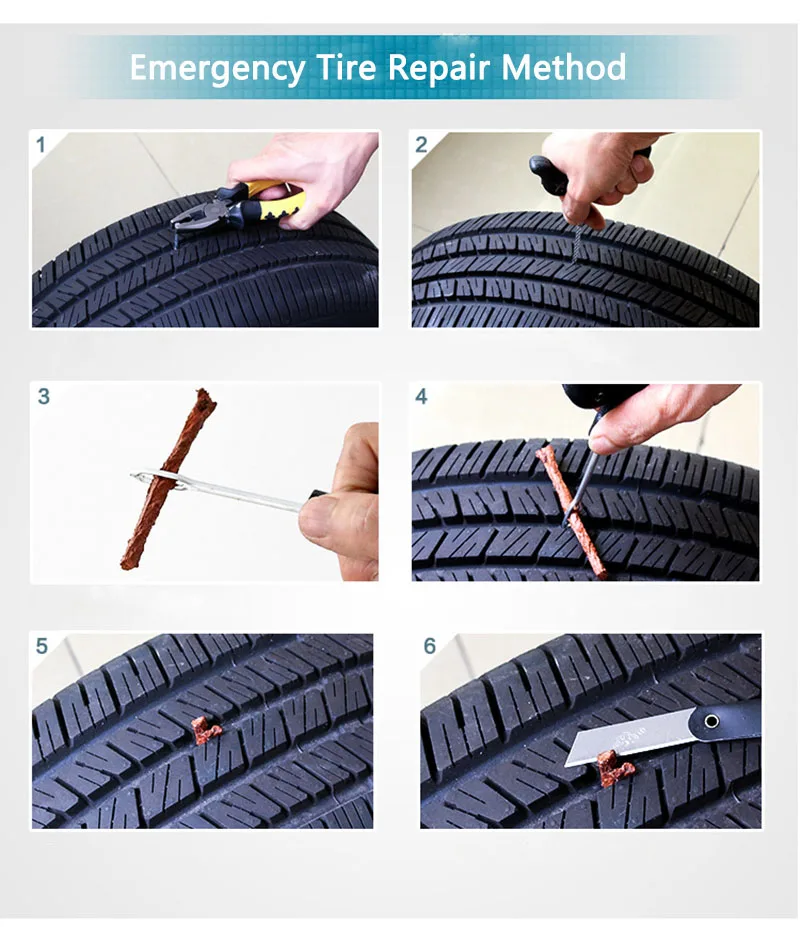 Jim’s streak of consecutive cycling days has reached more than 8,000. Click to read Jim’s full bio.
Jim’s streak of consecutive cycling days has reached more than 8,000. Click to read Jim’s full bio.
Tubeless tire setups are becoming increasingly popular among mountain bike, gravel, and even road cyclists, and for good reason: a tire that seals its own punctures is pretty convenient. So if you’re going to run tubeless tires, you’ll definitely need the key ingredient that makes that magic happen—that is, tubeless tire sealant.
We spoke with Drew Esherick, team mechanic for Pivot Maxxis p/b Stan’s NoTubes cyclocross team, to get expert advice on how to use tubeless tire sealant and more.
(Haven’t jumped on the tubeless train yet? Here’s everything you need to know about tubeless tires to decide if they’re right for you.)
Tubeless tire sealant is the liquid that goes inside tubeless tires and automatically plugs punctures as they happen.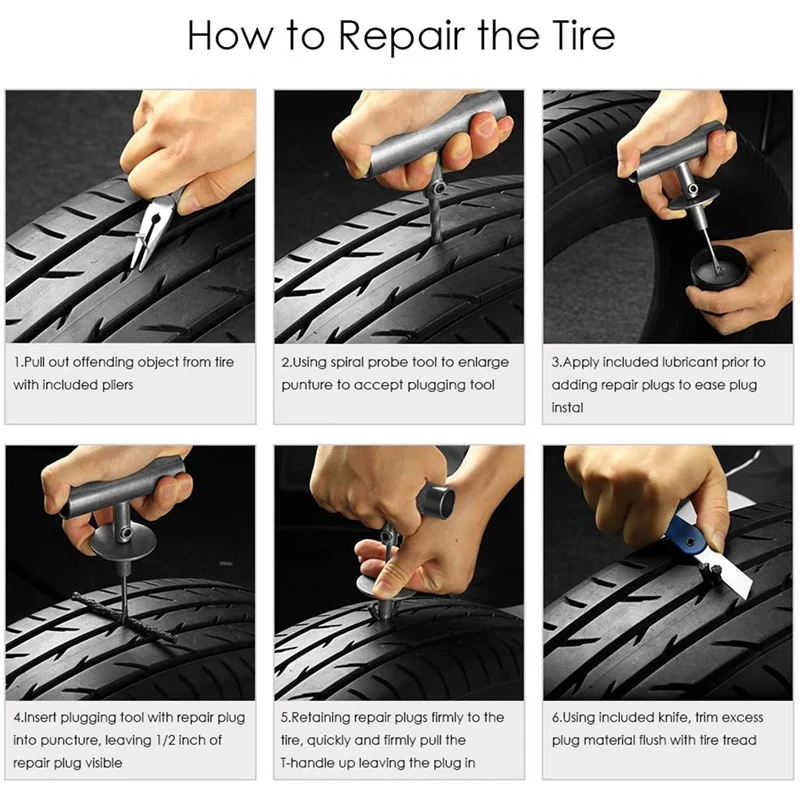 Most sealant is made from a natural latex base that dries inside a puncture when it’s exposed to air. There are particulates suspended in the latex—different brands use different materials—which is what gives the latex something to stick to in order to clog the hole instead of seeping out.
Most sealant is made from a natural latex base that dries inside a puncture when it’s exposed to air. There are particulates suspended in the latex—different brands use different materials—which is what gives the latex something to stick to in order to clog the hole instead of seeping out.
→ No matter what you need to improve in your riding life, find it with Bicycling All Access!
Race sealant is a version that has more and larger particulates floating in the latex than regular sealant, allowing it to coagulate much faster and fix larger punctures more quickly. But it also requires replacing a lot more frequently, so it’s best for riders who race regularly.
Trevor Raab
It depends on whether you’re setting up your tires for the first time or just topping them off.
“The imperfections in a new tire are going to soak up some of the sealant,” says Esherick. So when you’re doing an initial setup, you use about double the sealant you would when you’re just topping it off.
So when you’re doing an initial setup, you use about double the sealant you would when you’re just topping it off.
For a brand-new gravel or mountain bike tire, use about four or five ounces, and use two ounces for a road tire. These are approximate measurements, so don’t worry about getting it exactly right. “There’s no such thing as too much,” says Esherick. But it’s very common to use too little then wonder why your sealant “doesn’t work,” so be generous with it.
$34 at Competitive Cyclist
Credit: Stan's No Tubes$10 at Competitive Cyclist
Now 24% Off
$30 at Amazon
Credit: Muc-Off$31 at Amazon
The least messy way to get sealant into your tires is through the valve stem. To do this, you’ll need a valve-core remover to remove the valve core and a sealant injector to measure it out of the container and squirt it though the valve, or a pre-measured bottle with an injector tip. If you don’t have either of these, you can separate a section of your tire from the rim and just pour it in.
To do this, you’ll need a valve-core remover to remove the valve core and a sealant injector to measure it out of the container and squirt it though the valve, or a pre-measured bottle with an injector tip. If you don’t have either of these, you can separate a section of your tire from the rim and just pour it in.
Trevor Raab
Trevor Raab
If you’re pouring it in through an opening in the tire, Esherick suggests pouring the sealant in with the opening at the bottom of the tire, and then turning the wheel slowly to let the sealant run down inside the part of the tire that’s fully installed. This will allow you to finish installing that last bit of bead without making a mess. If you’re using race sealant, the larger coagulative particles are too big to fit through the valve without clogging it, so you’ll always pour it into the tire this way.
After adding the sealant, replace the valve core and inflate the tire to its specified pressure quickly to get the bead to settle in place on the rim. (Do not over-inflate; that can lead to explosions!)
(Do not over-inflate; that can lead to explosions!)
If your sealant is leaking out of a larger puncture rather than filling it, you can plug it by hand using a tubeless tire plug. These are little rubber strips you poke directly into the hole with a needle. The rubber will get stuck in the tire and react with the chemicals in the sealant and expand to plug the hole. And yes, you can put a bunch in your tire if you have multiple holes.
If a puncture doesn’t seal you can use a plug kit to help seal the hole.
Trevor RaabIf you get a gash in your tire that’s too big for the sealant to handle or even to plug by hand, you can remove the tubeless valve and install a regular inner tube on the rim to get home. Another thing to keep in mind is that sometimes sealant takes a bit of time to fix larger holes: You might need to pull off the trail and let it pool around the puncture for a minute or two so it can do it’s thing.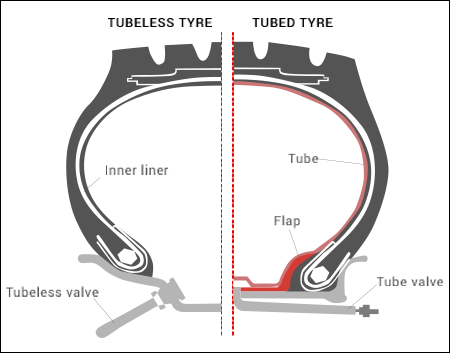
“If your tire gets a puncture that just won’t seal, it’s possible you are riding with too much pressure,” Esherick says. “And if you’re doing that, you’re not getting the benefit of tubeless tires, which is to run a lower pressure that’s more comfortable and has better traction.”
$155 at Trek Bikes
$68 at Amazon
Keep It Clean
$10 at notubes.com
Precisely measure sealant and install with no mess.
Mid-Ride Repair
$60 at dynaplug.com
Brass-tipped plugs make fixing bigger punctures easy.
“Bicycle tires are really thin and porous, which makes sealant evaporate over time and dry out,” Esherick says. That’s why it’s necessary to top off your sealant about every two to three months, even if you haven’t gotten a lot of punctures.
If your tire looks like this it’s time to clean it out and add some fresh sealant.
Trevor RaabAccording to Esherick, two ounces is the right amount of sealant for topping off gravel tires all the way up to 2.5-inch mountain bike tires. “If you’re up in the 2.5- to 2.6-inch range, you might want three ounces, and 2.7- to 2.8-inch tires require about four ounces,” Esherick says. “As you get a larger volume tire, you’re going to want a little bit more sealant in there.” Two ounces is enough for road tires for the first time, as well as plenty whenever you top them off.
Try to, at least once a year, take your tire completely off the rim to scrape out the dried sealant and start fresh. This preventative maintenance will keep your tires turning in time.
Riley Missel
Riley Missel is an experienced road racer, mountain biker, national champion on the track, and a former Bicycling editor.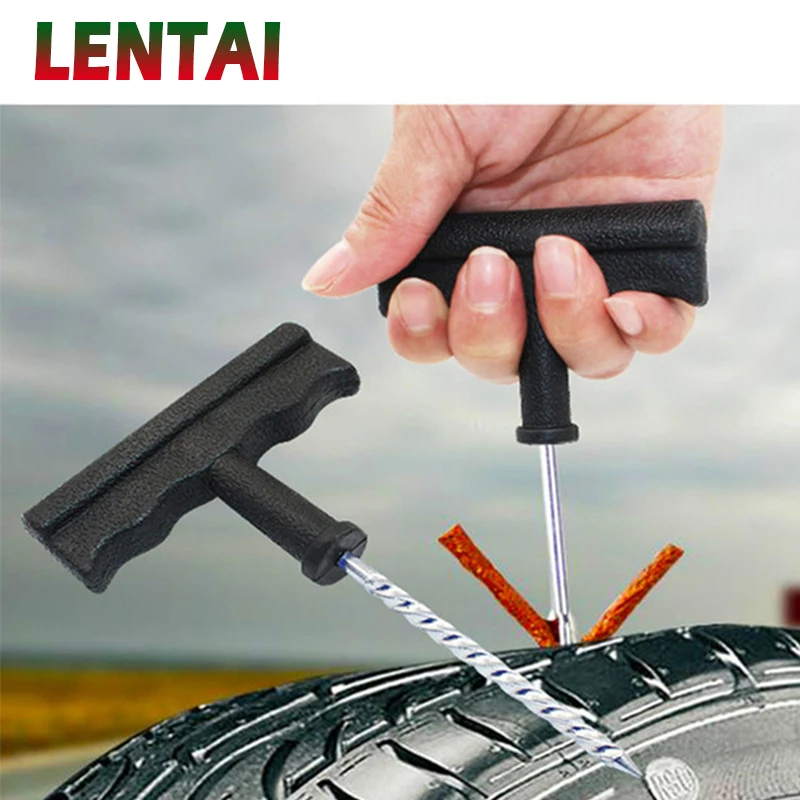 She is a USA Cycling-certified Level 1 coach, a loud and very stoked Spin instructor, and she will definitely stop the ride to pet that dog.
She is a USA Cycling-certified Level 1 coach, a loud and very stoked Spin instructor, and she will definitely stop the ride to pet that dog.
This content is imported from OpenWeb. You may be able to find the same content in another format, or you may be able to find more information, at their web site.
Tubeless tires can hardly be called the know-how of the bicycle industry, however, they still raise questions for many. The topic itself, as a rule, is surrounded by a lot of skepticism and distrust, which are more often explained by a lack of understanding of basic things and a lack of experience in riding such wheels. To dispel all these doubts, we answer the main questions related to tubeless technologies.
These are bicycle tires that do not have a tube. At the same time, tubeless technology is not only about tires. We are talking about a whole wheel system, which also includes a special rim and a sealant that gives the wheel anti-puncture properties. The tubeless concept makes the bike more comfortable to use and improves its riding performance, which will be discussed in order.
The tubeless concept makes the bike more comfortable to use and improves its riding performance, which will be discussed in order.
How long ago did this technology appear and can it be trusted?
Those who hear about bicycle tubeless for the first time usually tend to be suspicious of them. You can dislike this technology for subjective reasons, but you definitely shouldn’t distrust it. Tubeless tubes have been massively used for cars and motorcycles for several decades, and during this time they have not given reason to doubt their reliability.
The first tubeless systems for bicycles appeared in 1999, when the French rim brand MAVIC, in collaboration with tire manufacturer Hutchinson, presented their concept of a simple and effective tubeless wheel. In the 2000s, this technology remained the prerogative of mainly professional athletes, who quickly appreciated its main advantages: lighter weight, more air in the wheel, good "traction" and durability.
In recent years, tubeless has finally ceased to be perceived as something exotic. For example, today a significant part of the MTB and almost all touring cars come with such wheels as standard. A wide variety of sealants are also available on the market, and the number of those who are discovering the benefits of tubeless technology is steadily increasing.
For example, today a significant part of the MTB and almost all touring cars come with such wheels as standard. A wide variety of sealants are also available on the market, and the number of those who are discovering the benefits of tubeless technology is steadily increasing.
The tubeless system provides a special rim and tires that are labeled tubeless ready or TR. However, the rims themselves are easy to distinguish visually - they have a low side and characteristic walls with recesses, forming a kind of lock in which the tire cord is wedged when air is injected. Due to this, in the inflated state, the rubber reliably and hermetically “sits” on the rim, without breaking off the wheel even at low pressure. The rim itself is additionally glued with a sealing tape, after which the nipples are installed separately.
The benefits of tubeless wheels are revealed no matter how often and what kind of bike you ride: whether it's weekend trips, extreme downhill or long-distance touring.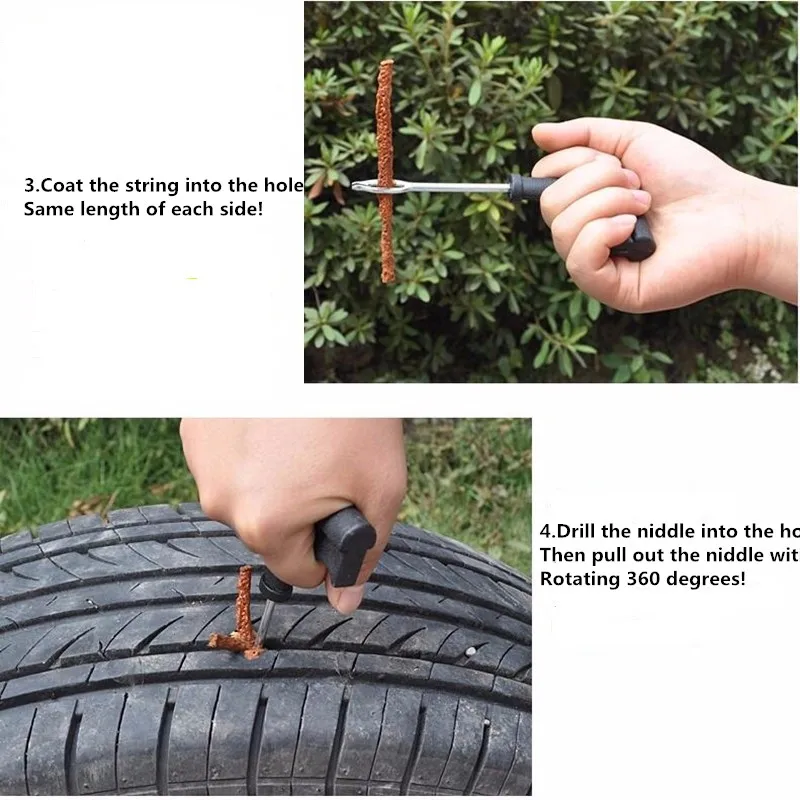 Nevertheless, for certain categories of cyclists tubeless still open up more opportunities: first of all, we are talking about those who are seriously passionate about off-road.
Nevertheless, for certain categories of cyclists tubeless still open up more opportunities: first of all, we are talking about those who are seriously passionate about off-road.
When actively driving off-road with tubeless tubes, you can ride on lowered wheels and at the same time not be afraid of such an unpleasant type of puncture as a snake bite. Low tire pressure, in turn, gives better handling, dampens vibrations more effectively and generally provides more comfort on difficult tracks. If we are talking about cyclists, then they appreciate tubeless for their anti-puncture qualities.
Road bikes also use tubeless wheels. Moreover, they are the pioneers of this technology. But road tubeless tubes are a different story: they are designed for different operating pressures and have tangible design differences. Therefore, further we will talk mainly about those tires that are put on mountain, touring and city bikes.
These are the two rim formats that define the features of a tubeless wheel assembly.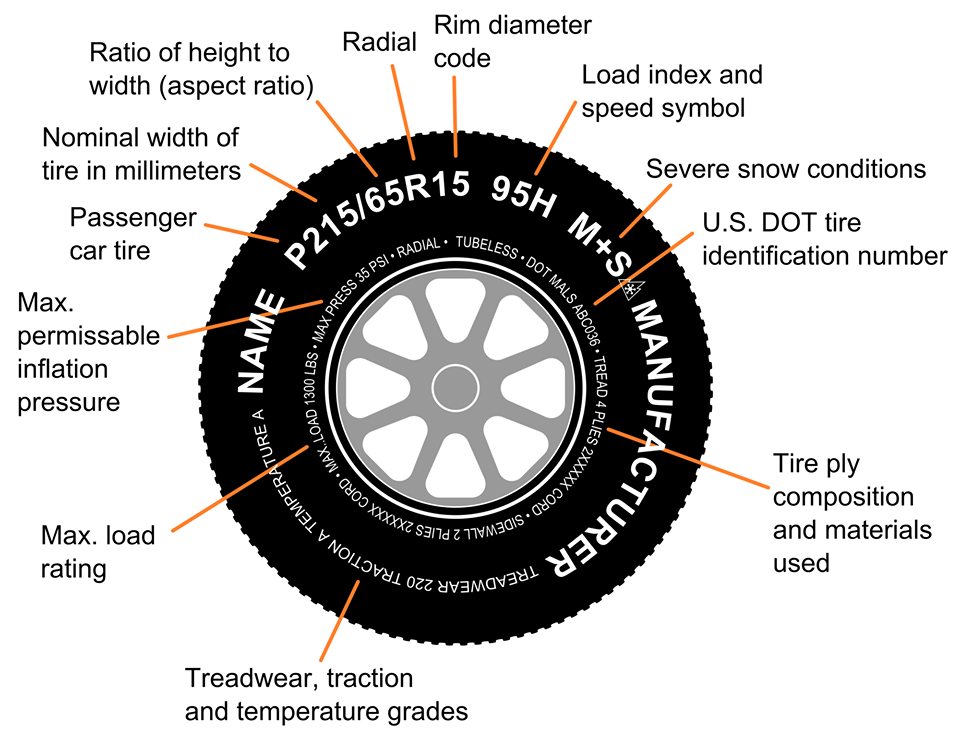 BST is a standard that involves the installation of a special sealing tape that prevents air from leaking through the holes in the spokes. This is the most common version of tubeless systems.
BST is a standard that involves the installation of a special sealing tape that prevents air from leaking through the holes in the spokes. This is the most common version of tubeless systems.
UST is a blind rim in which an additional bridge isolates the spoke holes. Thus, there is no need for laying a sealing tape. In practice, this greatly simplifies life, because when installing a tire (especially without proper experience), the tape tends to crush, which is why you have to reassemble the wheel. It is easy to guess that such rims also have a drawback - their price.
The tubeless system in the form in which we wrote it above is already a full-fledged wheel, it can be installed on a bicycle and hit the road. But there is an important nuance. First of all, tubeless tubes are valued for their anti-puncture qualities: for this, a small amount of a special liquid, a sealant, is poured inside the tire.
Yes, you can.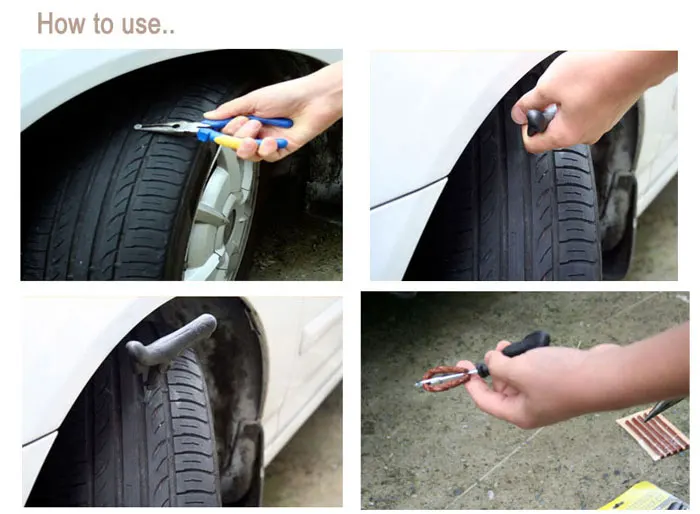 But you should not do this. Firstly, this is illogical: for no reason you are depriving yourself of the main advantage of tubeless - the anti-puncture effect. But more importantly, it is very difficult (or even impossible) to inflate such a tire in a completely flat state with a portable pump: to do this, you need either a strong floor pump or a booster. Naturally, no one will take such bulky things with them on the road. Filled with sealant 95% of punctures "seal" without a critical loss of pressure, and in most cases there is no need for even light pumping. Thus, the probability of being with a flat tire is very low.
But you should not do this. Firstly, this is illogical: for no reason you are depriving yourself of the main advantage of tubeless - the anti-puncture effect. But more importantly, it is very difficult (or even impossible) to inflate such a tire in a completely flat state with a portable pump: to do this, you need either a strong floor pump or a booster. Naturally, no one will take such bulky things with them on the road. Filled with sealant 95% of punctures "seal" without a critical loss of pressure, and in most cases there is no need for even light pumping. Thus, the probability of being with a flat tire is very low.
So, if you put tubeless, sealant is still needed. Such fluids are easy to find in any bike shop, they are inexpensive and require replacement on average once every three to four months, so there is no need to talk about any inconvenience. Yes, in order to cope with the fill, you need to acquire a certain skill, but this is much easier than constantly changing broken cameras. In addition, sealant can be replaced once a season in a specialized service.
In addition, sealant can be replaced once a season in a specialized service.
Bicycle sealants are based on fine particles (rubber or polymer fibers) suspended in a liquid carrier. Inside the wheel, the sealant does not polymerize: it is in a liquid state and is distributed along the inside of the tire during movement. When a puncture occurs, the air flow begins to push the solution out. A fine suspension clogs the hole, and the sealant dries quickly. Thus, there is a reliable "sealing" of the puncture.
If we talk about typical punctures - collisions with thorns, wires, small glasses - such damage is self-healing without a noticeable loss of pressure. Usually, a puncture can only be guessed from a small spot on the surface of the tire. Naturally, the sealant works with more complex damage. You can count on it even if you pierce the wheel with a thick nail, 4-5 mm in diameter. If you don't understand how a liquid can seal such holes, you can watch numerous crash tests on YouTube that demonstrate the miraculous properties of sealants.
The consumption per tire is from 50 to 100 ml. If we are talking about standard MTV tires, the golden mean is about 60 ml per wheel. The exact dosage will always be written on the bottle. It is difficult to get confused even for those who do not like to read instructions: most sealants have measuring containers or a dosage scale on the bottle itself.
Here, too, everything is conditional and depends on the characteristics of the specific composition and intensity of punctures. In the absence of serious damage that entails the leakage of a large volume of sealant, you can easily skate a whole season on one fill. Some cyclists prefer to do an incomplete start-up gas station and gradually add 20-30 ml of fluid every two to three months. You can also navigate by how effectively the sealant works: if you see that small punctures are sealed with a strong deflation of the wheel, it may be that the composition is no longer enough and it needs to be added.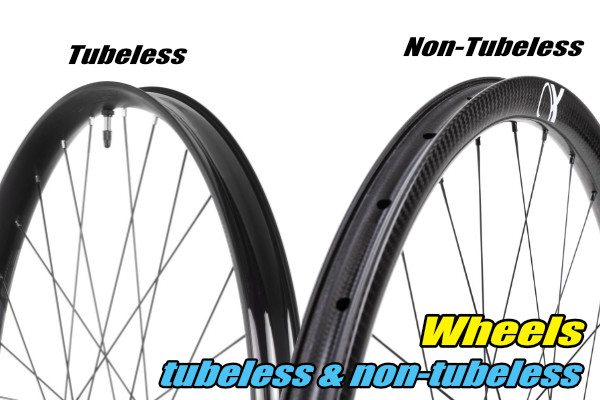 Be that as it may, sealant is a very economical thing that lasts for a long time.
Be that as it may, sealant is a very economical thing that lasts for a long time.
The sealant inside the tubeless tends to dry out, forming a characteristic film. Whether or not to clean the tire cavity is up to you. This is a purely aesthetic moment, which does not affect the operation of the anti-puncture fluid. The sealant can simply be added as it dries and not bother with unnecessary worries. It is more likely that the tire will completely wear out than it will have time to completely clog with dried filler.
Serious damage - large diameter punctures, small cuts, run over nails with subsequent tire rupture - are repaired using special repair worms. These are rubber or fibrous bands that are inserted into the hole to reduce its area and allow the sealant to seal the puncture.
With long longitudinal cuts it is more difficult. Here you need to either sew up the dissection with nylon threads, or stick a patch on the inside of the tire.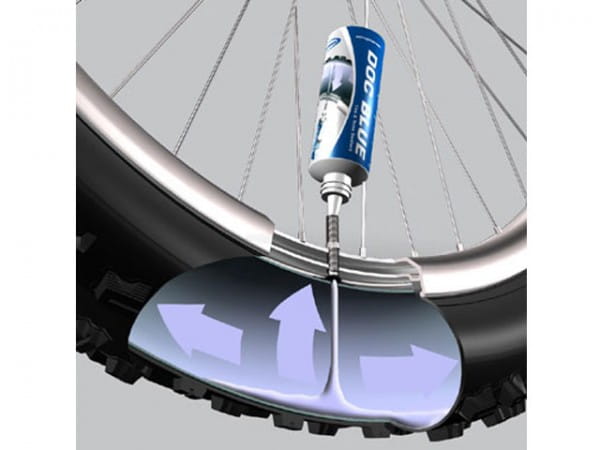 You don’t have to worry about the tightness of the repair site - the sealant will do this work, of course, if it does not have time to leak out. But being able to inflate a completely flat tire with only a portable pump will require skill.
You don’t have to worry about the tightness of the repair site - the sealant will do this work, of course, if it does not have time to leak out. But being able to inflate a completely flat tire with only a portable pump will require skill.
In fairness, we note that such complex injuries are rare for most cyclists. But for those who are seriously passionate about off-road, it is better to play it safe with a spare camera. In this case, having caught a cut, you can always drain the sealant, unscrew the nipple from the rim and install a regular camera. And in order not to drive with a “hernia” protruding outward, we recommend placing, for example, a bill folded in half under the cut on the tire.
Tubeless allows you to forget about such an unpleasant form of damage as a "snake bite" forever. It usually happens when at full speed you catch a pothole in the pavement, unsuccessfully jump onto a curb or run into a stone on a downhill. Hitting the edge of a hard object, the tire is crushed, and the rim walls work like incisors, damaging the chamber in two places. In tubeless wheels, this scenario is excluded, because. there is nothing to break through here. Of course, it can be assumed that the rim will cut the tire itself, but this should be a blow of enormous force, which is almost never encountered in practice.
Hitting the edge of a hard object, the tire is crushed, and the rim walls work like incisors, damaging the chamber in two places. In tubeless wheels, this scenario is excluded, because. there is nothing to break through here. Of course, it can be assumed that the rim will cut the tire itself, but this should be a blow of enormous force, which is almost never encountered in practice.
Rejection of the chamber increases the volume of air in the wheel. This changes the contact patch (it becomes flatter) and allows the wheels to better absorb off-road bumps. Add here the ability to ride at low pressure, without being afraid of a snake bite, and it becomes completely clear why tubeless lovers of hard off-road riding so idolize. Soft tires with a large contact patch "fit" all the bumps in the road, giving excellent traction on rocks, forest primers and other off-road.
In addition to traction, tubeless tires improve shock absorption, dampen vibrations better, and generally provide more off-road comfort. At the same time, to get the most out of this rubber, you need to experiment a lot with tire pressure, trying to find the indicators that will best suit your individual riding style.
At the same time, to get the most out of this rubber, you need to experiment a lot with tire pressure, trying to find the indicators that will best suit your individual riding style.
Finally, the camera is extra grams. By refusing them, you can save an average of 70-100 g of weight on each wheel. For some, this may seem like a formality, but it is worth considering the fact that extra grams on the periphery of the wheel have a stronger effect on driving performance. This difference is especially felt on road bikes: road bikes, gravel, touring.
They also exist. Moreover, it is far from formal. First, it's the price. The difference becomes especially noticeable when you buy tubeless systems separately: rims, tires + small things (tape, removable nipples, sealant). For tubeless you will have to pay an average of one and a half times more than for ordinary wheels, plus or minus the same class. And if we are talking about more advanced UST rims, then this means another + 30-40% to the cost.
With tubeless by default, everything is more difficult in terms of installation (here we are talking about conventional BST systems). You need to learn how to properly glue the tape, accurately insert the nipples, carefully install tight rubber, making sure not to displace the tape and not fill everything with sealant. On the other hand, all this comes with experience, but what you will always have to put up with is the difficulty with pumping a completely flat tire.
A tubeless tube cannot be inflated until its landing board snaps into place on the rim. To do this, you need to sharply introduce air into the tire. The tire should straighten up and fall into the grooves with a characteristic click - then it can be safely pumped further. This all sounds simple if there is a compressor in the garage. Putting a tubeless tube into the grooves by pumping air with an ordinary floor pump is quite difficult, and almost impossible with a portable bicycle pump.
All this makes life much more difficult.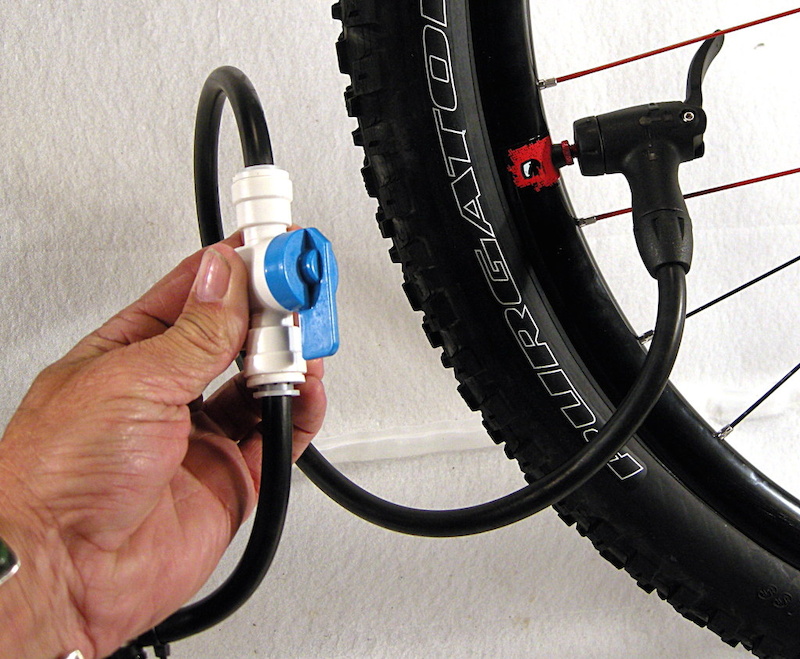 But there are solutions. In the field, a compact can of compressed air can help out. At home, installing tubeless tubes greatly simplifies the booster. This is a cylinder into which a high pressure is pumped with a pump, then it is connected to a nipple, the valve is lowered - and the air from the reservoir pumps up the wheel sharply.
But there are solutions. In the field, a compact can of compressed air can help out. At home, installing tubeless tubes greatly simplifies the booster. This is a cylinder into which a high pressure is pumped with a pump, then it is connected to a nipple, the valve is lowered - and the air from the reservoir pumps up the wheel sharply.
As you can see, tubeless cameras also have enough disadvantages, but it is wrong to consider them in isolation from the advantages. For example, the probability of being with a completely flat tire away from home is very low, due to the anti-puncture qualities. Complicated installation is offset by the lack of punctures and roadside repairs. And by overpaying in price, you save on interchangeable cameras, and, of course, win as a roll on off-road.
There is a lot of controversy on the net about whether a tube is put in a tubeless tire and what the consequences of repair are.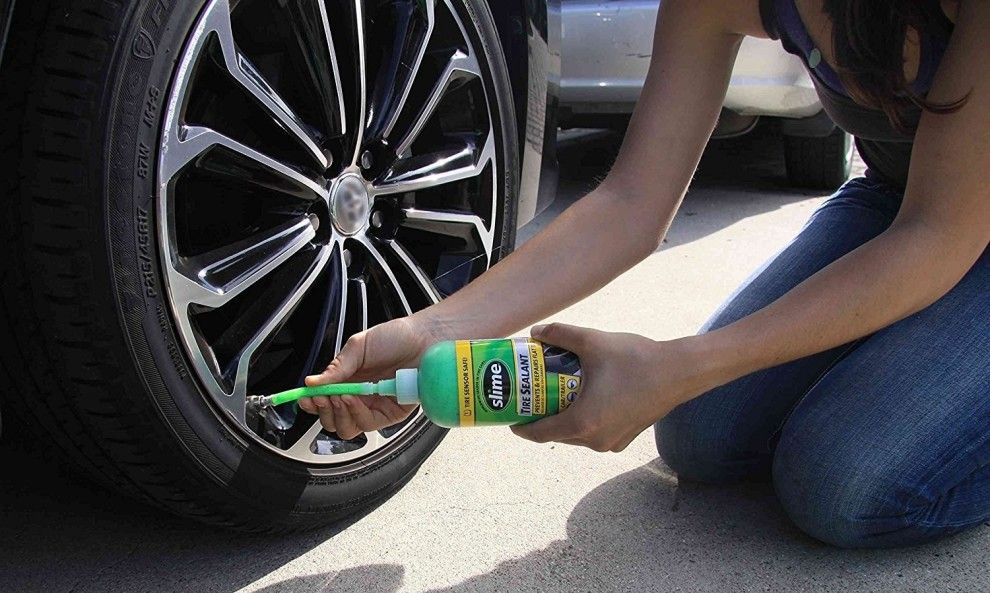 Some users claim that in this case, the car behaves unpredictably. Others insist on the acceptability of the repair method.
Some users claim that in this case, the car behaves unpredictably. Others insist on the acceptability of the repair method.
Contents
Experts are also divided into two camps. On the one hand, put a similar wheel - harm the car. Opponents do not see anything terrible.
Before drawing conclusions and making a decision, it is necessary to carefully weigh all the advantages and disadvantages of the procedure.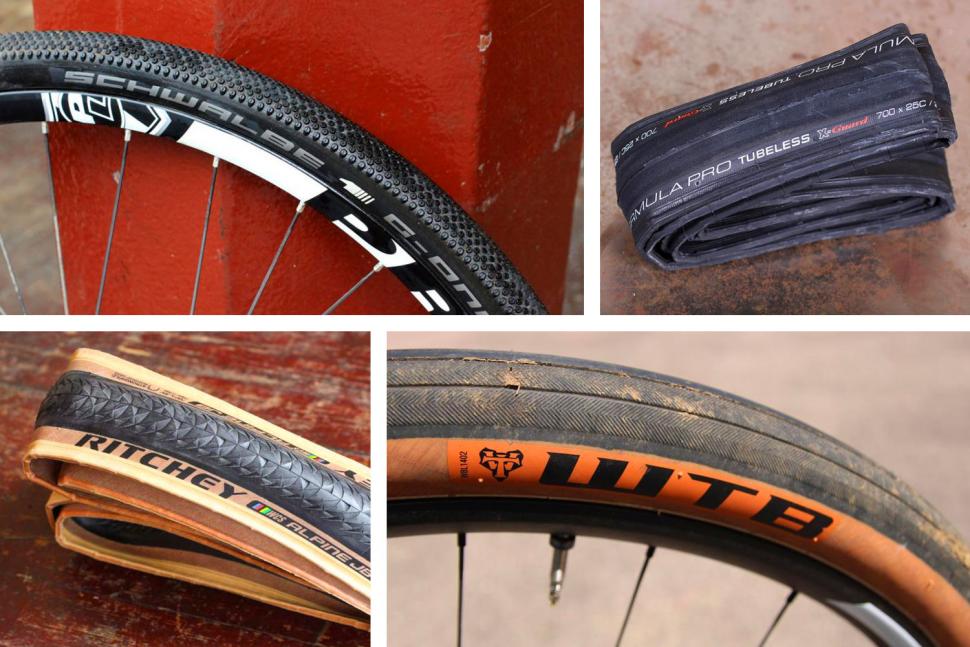
The procedure has definite pluses and minuses, indicating the expediency of repair.
Advantages.
Disadvantages.
 Due to the tightness of the space, the camera does not fully expand. Also there are ribbed parts. Inserts rub the surface of the camera.
Due to the tightness of the space, the camera does not fully expand. Also there are ribbed parts. Inserts rub the surface of the camera. Thus, as an emergency option, the method will fit for an accurate overcoming of 100-200 km. With constant use - it is recommended to change the wheel.
Self-installation in a tubeless tube is done as follows.
To eliminate the air bubble, some experts recommend slowly inflating the chute while lowering the nipple slightly into the socket.
The method is valid for all wheels, regardless of size, be it 14, 15 or r16.
Installing a camera in a modern cylinder on an alloy wheel is not allowed. The exception is the need for short-term rolling within 200 km. or use as a spare.
Damage to the rim or tire itself can provoke the need. Leakage is eliminated by inserting an independent pressure-holding cylinder.
If the slot is wide, the chamber may be forced out by internal pressure.
This can cause the wheel to explode while driving. Simultaneously with the imposition of a "fur coat" - a reinforcing element, the operation of the cameras is possible.
Modern rims are equipped with special hump rings. The parts are designed to hold the tire cord in a pressed state.
If the tire continues to be used, due to the lack of a retaining element, it will quickly be torn off its seat.
The formation of a hernia on the tire indicates damage to the inner layer of the cord. If the fabric or metal base is destroyed, further operation of the product is categorically not recommended.
The same applies to installing a tube in a damaged tire. The additional insert does not have a reinforcing layer. The soft chamber is highly stretchable, making it useless to mount.
Usually tubeless tires can deflate in three cases.
If there are no obvious punctures, pay attention to the above factors or install a conventional camera inside.
Special patches may be installed in some cases. In case of serious punctures, a part sealing the hole is attached from the inside by vulcanization or special glue.
This repair is not possible in every case. Long cuts, torn holes are not subject to sealing. The patch is squeezed out through the hole, which eliminates the effect of the repair.